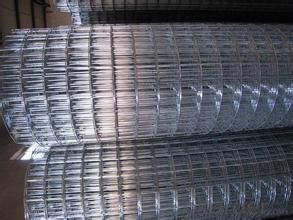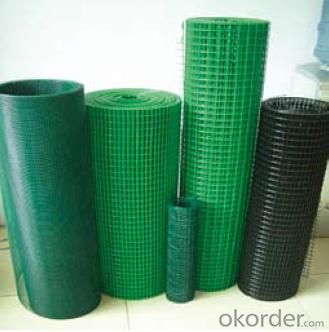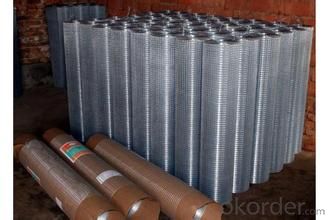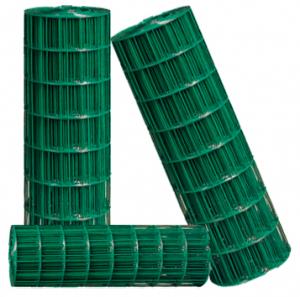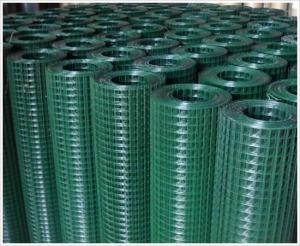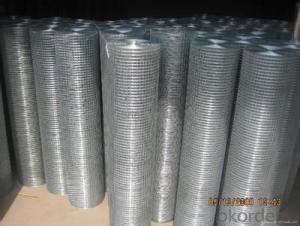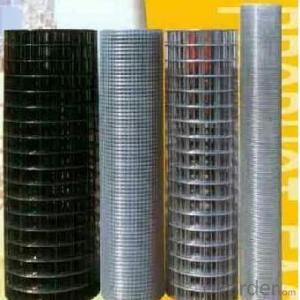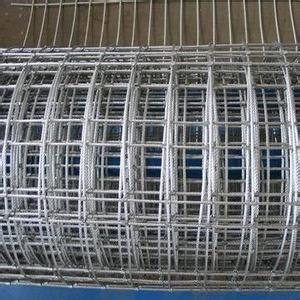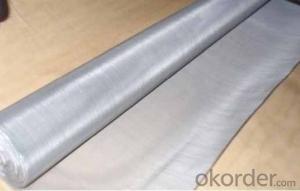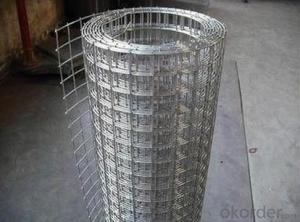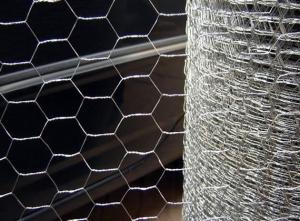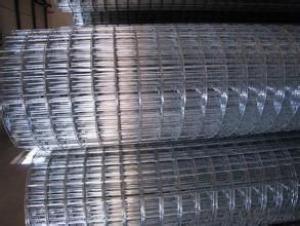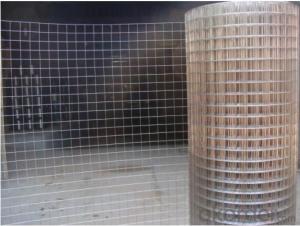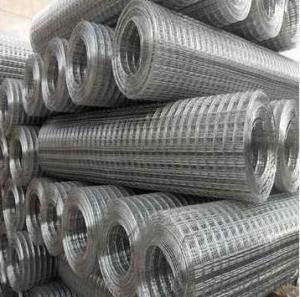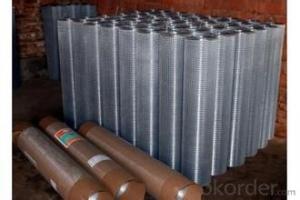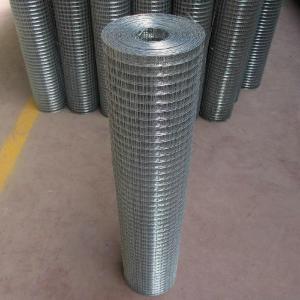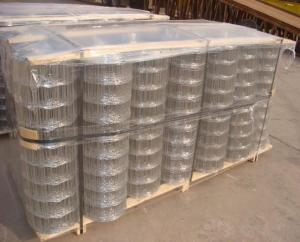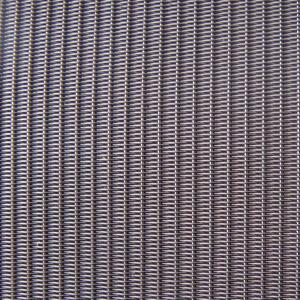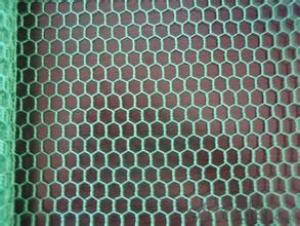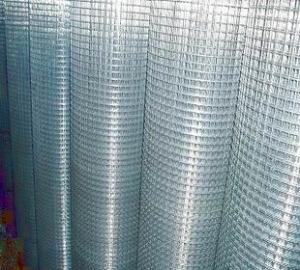Welded Wire Mesh for Construction -2 X 2
- Loading Port:
- Tianjin
- Payment Terms:
- TT or LC
- Min Order Qty:
- 50 roll
- Supply Capability:
- 5000 roll/month
OKorder Service Pledge
OKorder Financial Service
You Might Also Like
Introduction of Welded Wire Mesh
Welded Wire Mesh is made of by high quality galvanized wire, Low carton steel wire, stainless steel wire, iron wire, Galvanized steel wire, PVC coated iron wire in blue, green, yellow and other colors.
Application of Welded Wire Mesh
Galvanized welded wire mesh, PVC coated welded wire mesh for garden, feeding agriculture, fishing, poultry, mine field, lawn cultivation, and profession’s guard, decorate machine protection. Special welded wire mesh, (Heavy)welded wire mesh panel service as fencing mesh for transportation industry, construction a agriculture.
Surface treatment of of Welded Wire Mesh
a. Black (mild steel wire)
b. Electro galvanized, (galvanized before welding, galvanized after welding)
c. Hot dip galvanized, (galvanized before welding, galvanized after welding)
d. Pvc coated welded wire mesh, (black wire mesh then pvc coated, electro gal. then pvc coated, hot dip gal. the pvc coated)
Advantage of Welded Wire Mesh
Our welded wire mesh has strong corrosion-resisting and oxidation-resisting with good quality and rock bottom price.
Packing of Welded Wire Mesh
1. Waterproof paper then PVC shrinking Film
2. PVC shrinking film only
3. Black waterproof paper only
4. Waterproof paper then metal/wooden pallet
5. Plastic film then carton
(Also as your request. )
Pictures of Welded Wire Mesh
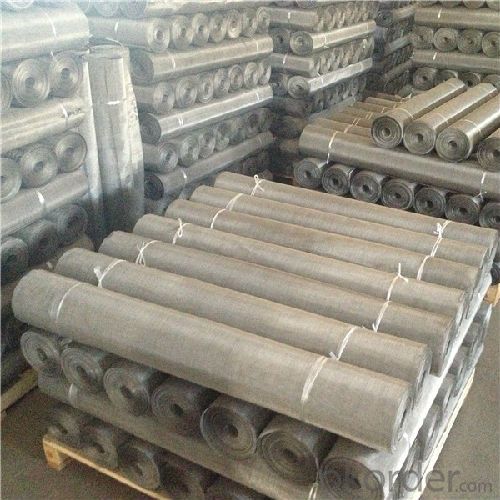
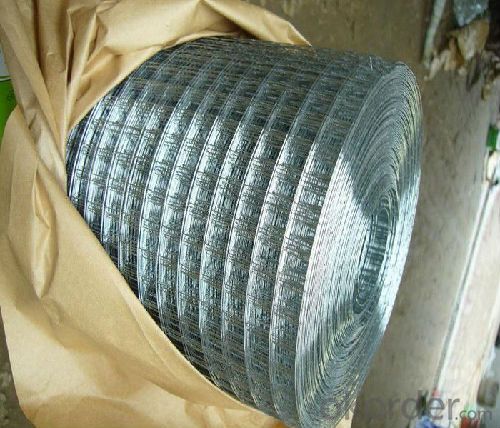
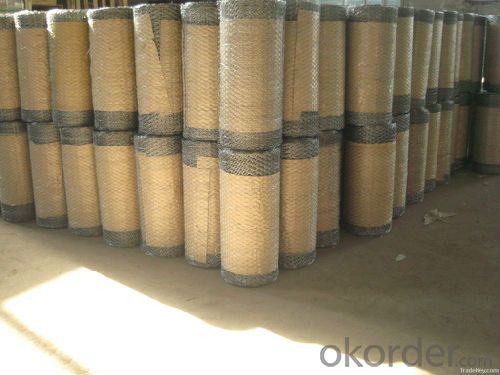
Specification of Welded Wire Mesh
Standard Welded Wire Mesh (in 30m length, Width of 0.5m-1.8m) | ||
Mesh | Wire Gauge (BWG) | |
Inch | MM | |
1/4" x 1/4" | 6.4mm x 6.4mm | 22-24 |
3/8" x 3/8" | 10.6mm x 10.6mm | 19-22 |
1/2" x 1/2" | 12.7mm x 12.7mm | 16-23 |
5/8" x 5/8" | 16mm x 16mm | 18-21, |
3/4" x 3/4" | 19.1mm x 19.1mm | 16-21 |
1" x 1/2" | 25.4mm x 12.7mm | 16-21 |
1-1/2" x 1-1/2" | 38mm x 38mm | 14-19 |
1" x 2" | 25.4mm x 50.8mm | 14-16 |
2" x 2" | 50.8mm x 50.8mm | 12-16 |
1/4" x 1/4" | 6.4mm x 6.4mm | 12-16 |
Welded Fencing Mesh (in 30m Length, Width of 0.5m -1.8m) | ||
Mesh | Wire Gauge (BWG) | |
Inch | MM | |
2" x 3" | 50mm x 75mm | 1.65-2.5mm |
3" x 3" | 75mm x 756mm | 1.65-2.75mm |
2" x 4" | 50mm x 100mm | 2.1-2.9mm |
4" x 4" | 100mm x 100mm | 2.0mm,2.5mm |
FAQ
We have organized several common questions for our clients,may help you sincerely:
1. How about your company?
A world class manufacturer & supplier of welded wire mesh and is one of the large-scale professional investment welded wire mesh bases in China. Annually more than 1000 containers of welded wire mesh are exported to markets in Europe, America and Japan.
2. What is the storage condition?
The welded wire mesh should be stored at room temperature and kept from wet and heat source.
3. How to guarantee the quality of the products?
We have established the international advanced quality management system,every link from raw material to final product we have strict quality test;We resolutely put an end to unqualified products flowing into the market. At the same time, we will provide necessary follow-up service assurance.
4. How long can we receive the product after purchase?
In the purchase of product within four working days, we will arrange the factory delivery as soon as possible. The specific time of receiving is related to the state and position of customers. Commonly 7 to 10 working days can be served.
- Q: Does steel wire mesh provide good ventilation?
- Good ventilation is provided by steel wire mesh. The mesh's open structure allows for unrestricted airflow, making it an excellent choice for situations that require ventilation. Whether it is utilized in windows, fences, or other constructions, the steel wire mesh permits the circulation of fresh air while ensuring security and protection. Moreover, the durability and strength of steel make it a dependable choice for long-term ventilation requirements. All in all, steel wire mesh is a successful solution for achieving superior airflow and ventilation in diverse environments.
- Q: Can steel wire mesh be used for animal enclosures?
- Yes, steel wire mesh can be used for animal enclosures. Steel wire mesh is a durable and strong material that can effectively contain animals and provide a secure enclosure. It is commonly used for fencing and enclosures in zoos, farms, and pet enclosures. The small gaps in the mesh prevent animals from escaping while allowing for proper ventilation and visibility. Additionally, steel wire mesh is resistant to chewing, which makes it suitable for enclosures for animals that have a tendency to chew or scratch. Overall, steel wire mesh is a reliable and versatile option for creating animal enclosures.
- Q: What are the different types of coatings used for steel wire mesh?
- Steel wire mesh can be coated with various types of coatings, each with its own unique properties and advantages. Some commonly used coatings for steel wire mesh include: 1. Galvanized Coating: Galvanization is a popular coating method for steel wire mesh. It involves applying a layer of zinc to the mesh surface, providing excellent corrosion resistance and durability. Galvanized coatings are available in two forms: hot-dip galvanized, which offers a thicker and more durable coating, and electro-galvanized, which provides a thinner but still effective corrosion protection. 2. PVC Coating: PVC coating is commonly used to provide additional protection against corrosion and abrasion for steel wire mesh. This coating is applied through extrusion, where a layer of melted PVC is bonded to the wire surface. PVC coatings also offer insulation, chemical resistance, and color options. 3. Epoxy Coating: Epoxy coatings are suitable for steel wire mesh that requires high chemical resistance and durability. They can be applied as liquid or powder coatings, forming a strong and protective layer on the mesh surface. Epoxy coatings have excellent adhesion, resistance to chemicals, abrasion, and impact. 4. Polyester Coating: Polyester coatings are known for their durability and resistance to UV radiation, making them ideal for outdoor applications. They are applied using a powder coating process, where a layer of polyester is electrostatically sprayed onto the wire mesh and then cured to form a tough and protective finish. 5. Polyethylene Coating: Polyethylene coatings are often used when the wire mesh needs protection against chemicals, moisture, and UV radiation. These coatings are applied through fusion bonding, where the polyethylene material is melted and adhered to the wire mesh surface. Polyethylene coatings provide excellent corrosion and abrasion protection. These examples demonstrate the variety of coatings available for steel wire mesh. The choice of coating depends on specific requirements such as corrosion resistance, durability, chemical resistance, and environmental factors. It is advisable to consult a knowledgeable supplier or coating specialist to determine the most suitable coating for a particular steel wire mesh application.
- Q: What are the different wire diameters available for steel wire mesh?
- There are various wire diameters available for steel wire mesh, depending on the specific application and requirements. Common wire diameters for steel wire mesh range from as small as 0.5mm (0.02 inches) to as large as 12mm (0.47 inches). However, it is important to note that the availability of wire diameters may vary depending on the mesh opening size and the intended use of the steel wire mesh. For finer mesh openings, such as those used in insect screens or filtration applications, the wire diameters are typically smaller, ranging from 0.5mm to 2mm (0.02 to 0.08 inches). These finer wire diameters allow for better filtration and retention of smaller particles or insects. On the other hand, for coarser mesh openings used in fencing or construction applications, the wire diameters tend to be larger. In such cases, wire diameters can range from 3mm to 12mm (0.12 to 0.47 inches), providing increased strength and durability to withstand higher loads and impacts. It is important to choose the appropriate wire diameter based on the specific requirements of the application. Factors such as the desired level of strength, flexibility, corrosion resistance, and the intended use of the steel wire mesh should all be taken into consideration when selecting the appropriate wire diameter.
- Q: What are the standard sizes of steel wire mesh?
- The standard sizes of steel wire mesh vary depending on the application and industry. However, some common standard sizes include 4x8 feet, 5x10 feet, and 6x12 feet. Additionally, wire mesh is available in various wire diameters and mesh opening sizes to suit specific needs and requirements.
- Q: Is steel wire mesh suitable for use in construction site safety nets?
- Yes, steel wire mesh is suitable for use in construction site safety nets. Steel wire mesh is known for its high strength and durability, making it an ideal material for safety nets. It can effectively catch falling objects or debris, preventing them from causing harm to workers or pedestrians below. Steel wire mesh is also resistant to weather conditions, such as wind and rain, ensuring its longevity and reliability. Additionally, the small gaps in the mesh allow for proper ventilation and visibility, while still providing a secure barrier. Overall, steel wire mesh is a practical and effective choice for construction site safety nets.
- Q: What are the different edge finishes available for steel wire mesh?
- There are several edge finishes available for steel wire mesh, each serving a specific purpose and aesthetic preference. Some of the common edge finishes include: 1. Plain Cut: This is the simplest and most cost-effective edge finish where the wire mesh is cut without any additional treatment or finishing. It results in a raw, rough edge. 2. Selvage Edge: This edge finish involves looping the wire ends back into the mesh structure, creating a reinforced edge that prevents fraying or unraveling. It provides added strength and durability to the mesh. 3. Welded Edge: In this finish, the wire ends are welded together, creating a seamless and smooth edge. It enhances the appearance of the mesh and eliminates any sharp edges that may cause injury. 4. Hemmed Edge: A hemmed edge is created by folding the wire ends over and securing them with a separate piece of wire or binding. This finish not only reinforces the edge but also provides a neat and clean appearance. 5. Extruded Edge: This edge finish involves applying a plastic or rubber extrusion along the wire mesh edge. It provides a protective barrier against corrosion, improves safety by eliminating sharp edges, and can enhance the visual appeal with various color options. 6. Knuckled Edge: A knuckled edge is formed by bending the wire ends back towards the mesh, creating a rounded, smooth edge with no sharp protrusions. This finish is commonly used in applications where safety is paramount, such as playgrounds or fencing. The choice of edge finish depends on the intended use of the steel wire mesh, the desired appearance, and the level of safety required. Each finish has its advantages and disadvantages, so it is crucial to consider these factors when selecting the appropriate edge finish for a specific application.
- Q: Is steel wire mesh resistant to chemicals in concrete?
- Yes, steel wire mesh is generally resistant to chemicals in concrete. Steel is a highly durable and strong material that is commonly used in construction and concrete reinforcement. Steel wire mesh is typically made from corrosion-resistant alloys, such as stainless steel, which provide excellent resistance to chemical reactions with concrete components. These alloys have a high resistance to alkaline materials found in concrete, such as calcium hydroxide. Moreover, steel wire mesh is often coated with additional protective layers, such as epoxy or galvanized coatings, which further enhance its resistance to chemicals. This makes steel wire mesh a reliable choice for reinforcing concrete structures in various environments, including those exposed to chemicals. However, it is important to note that extreme or prolonged exposure to highly corrosive chemicals may eventually cause some degradation or corrosion of the steel wire mesh over time. Therefore, it is crucial to consider the specific chemicals and conditions in which the concrete will be exposed and consult with experts to determine the most suitable reinforcement material for the project.
- Q: Is steel wire mesh suitable for animal traps?
- Yes, steel wire mesh is suitable for animal traps. It is a durable and strong material that can effectively contain and trap animals.
- Q: Can steel wire mesh be customized to specific sizes?
- Yes, steel wire mesh can be customized to specific sizes.
Send your message to us
Welded Wire Mesh for Construction -2 X 2
- Loading Port:
- Tianjin
- Payment Terms:
- TT or LC
- Min Order Qty:
- 50 roll
- Supply Capability:
- 5000 roll/month
OKorder Service Pledge
OKorder Financial Service
Similar products
Hot products
Hot Searches
Related keywords



